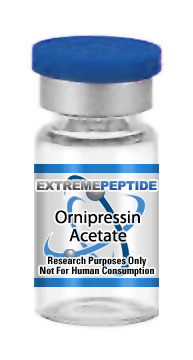(Click here to read our disclaimer)
Ornipressin acetate may act as a haemostatic, vasoconstrictor and renal agent. This is a general term for the synthetic version for the natural chemical vasopressin which is produced in the body. The synthetic version of this chemical has an ornithine in the eighth position of the cyclic octapeptide chain. Much of the research regarding potential uses or understanding of the chemical is ongoing.
When purchasing ornipressin for research purposes it is vital to invest in a pure sample. Because there are many chemicals similar to ornipressin acetate on the market it can be difficult to determine if you are purchasing a sample that will behave the way you have hoped during clinical research.
Purchasing from a licensed dealer can help to ensure that you receive the proper chemical for your research as well as a sample that is sure to be pure to help guarantee accurate results during testing.
Effects on Lignocaine Nerve Blocks
Using an electrophysiogical method of measuring the conduction of nerves after an electrical stimulation of the sciatic nerve branches, anaesthetized rats were evaluated under controlled conditions to determine the effects of ornipressin on the system.
Factors compared included the duration of the lignocaine anesthesia as well as the speed of onset.
Research determined that compared to lignocaine on its own, lignocaine combined with ornipressin during applications would produce shorter onsets of anesthesia with an improved duration and depth.
During the adrenaline exposure to lignocaine this simple extended the action of the chemical while ornipressin, even at very low concentrations during application produced satisfactory results. This implies that ornipressin may be considered a satisfactory vasoconductor for adrenaline, though this may still produce undesirable results in some candidates.
Effects on Ovariectomized Rats in Vivo
Over a two week period of oral raloxifene therapy on nitric oxide at the cardio level, ovariectomized rats were monitored for the susceptibility of the angina.
This ovariectomy caused a decrease in the nitric oxide synthase activity following this application and again after an application of phentolamine. After reloxifene was applied these effects were reversed.
The ST segment depression was augmented in the rats and this abolished the anti-ischaemic effects following the raloxifene.
Oestrogen deficiency can down regulate cardiac constitutive nitric oxide synthase that can increase the heart’s susceptibility to ishaemia. Both of these actions can be prevented using exogenous administration of a natural oestrogen product or by applying a selective oestrogen-receptor modulator such as raloxfiene in vivo as raloxifene exerts the oestrogen antagonist properties.
In order to keep samples of ornipressin acetate pure during long-term testing all instructions on the container should be followed explicitly. Keep this chemical in a sealed container and take care when storing the chemical to ensure that it is not being exposed to extreme temperatures that can cause the peptide to break down more quickly.
Avoid freezing and re-thawing the peptide repetitively if you will be using it for multiple experiments that will take long periods of time as this will also work to break down the peptide more quickly, which may alter its performance.
Sources:
http://onlinelibrary.wiley.com/doi/10.1111/j.1399-6576.1986.tb02493.x/abstract?deniedAccessCustomisedMessage=&userIsAuthenticated=false
http://www.sciencedirect.com/science/article/pii/S0014299904005588
Click here to view our entire PDF research library
Click here to view/download the PDF version of this article
